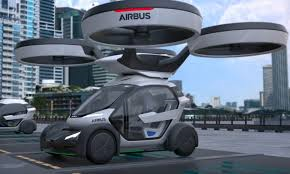
Breaking News
 Mirrored concrete for cheap solar energy
Mirrored concrete for cheap solar energy
 All Government Is Dictatorial Because All Government Is Totalitarian
All Government Is Dictatorial Because All Government Is Totalitarian
 Putin Says He's Ready for Peace
Putin Says He's Ready for Peace
 Medicaid Fraud in Minnesota at least $9 Billion Since 2018
Medicaid Fraud in Minnesota at least $9 Billion Since 2018
Top Tech News
 This tiny dev board is packed with features for ambitious makers
This tiny dev board is packed with features for ambitious makers
 Scientists Discover Gel to Regrow Tooth Enamel
Scientists Discover Gel to Regrow Tooth Enamel
 Vitamin C and Dandelion Root Killing Cancer Cells -- as Former CDC Director Calls for COVID-19...
Vitamin C and Dandelion Root Killing Cancer Cells -- as Former CDC Director Calls for COVID-19...
 Galactic Brain: US firm plans space-based data centers, power grid to challenge China
Galactic Brain: US firm plans space-based data centers, power grid to challenge China
 A microbial cleanup for glyphosate just earned a patent. Here's why that matters
A microbial cleanup for glyphosate just earned a patent. Here's why that matters
 Japan Breaks Internet Speed Record with 5 Million Times Faster Data Transfer
Japan Breaks Internet Speed Record with 5 Million Times Faster Data Transfer
 Advanced Propulsion Resources Part 1 of 2
Advanced Propulsion Resources Part 1 of 2
 PulsarFusion a forward-thinking UK aerospace company, is pushing the boundaries of space travel...
PulsarFusion a forward-thinking UK aerospace company, is pushing the boundaries of space travel...
 Dinky little laser box throws big-screen entertainment from inches away
Dinky little laser box throws big-screen entertainment from inches away
 'World's first' sodium-ion flashlight shines bright even at -40 ºF
'World's first' sodium-ion flashlight shines bright even at -40 ºF
Airbus looking at large drones, flying cars with tests starting 2023

The company is investing in two UAM research programs, CityAirbus, being developed in Europe by Airbus Helicopters under the group's chief technology office (CTO), and the Vahana being developed by the company's Silicon Valley offshoot, A3.
Airbus has already carried out a successful trial in São Paulo of its helicopter ride-hailing service Voom, which aims to ease congestion by making helicopter travel more accessible and affordable. Elsewhere, teams from Silicon Valley to Europe and Asia are working to create entirely new vehicles. CityAirbus is an electric vertical take-off and landing (VTOL) vehicle for up to four passengers, while Vahana aims to create a similar mode of transport for individual travellers or cargo transport. In Singapore, the company is working with the country's National University on the Skyways project to test a parcel transport system using autonomous drones.
While each mission has its own individual requirements, Thomsen says there is an overlap of several core technologies Airbus is developing. "Quite simply, in today's environment, any new solution has to be electrically driven, so batteries and charging stations are indispensable. Vahana and, eventually, CityAirbus will be autonomous to help facilitate safe operation in busier airspace, making reliable sense-and-avoid technology an important aspect.



